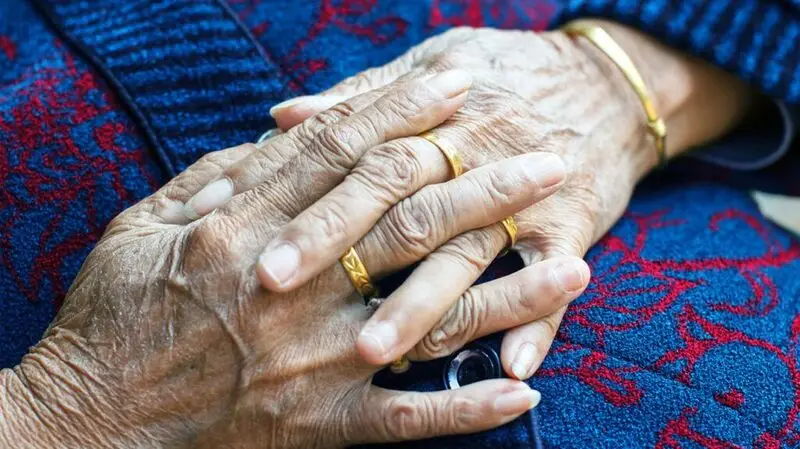
- Dementia is a hard disease to diagnose for a number of reasons.
- A new study has found that people who have dementia are, on average, diagnosed 3.5 years after symptoms first appear.
- This is even longer — an average of 4.1 years after symptoms first show — for people with early onset dementia.
According to the World Health Organization (WHO), about
Dementia is a hard disease to diagnose. There is currently no single test to diagnose the condition, and symptoms of dementia are very similar to those of other diseases. Additionally, for some people, their dementia symptoms are very subtle in the early stage of the disease, making it hard for a doctor to make a complete diagnosis.
Over the last few years, researchers have been focusing on finding new ways to help doctors detect and diagnose dementia as early as possible.
“Timely diagnosis of dementia is crucial for several reasons,” Vasiliki Orgeta, PhD, associate professor in the Division of Psychiatry, Faculty of Brain Sciences at University College London, explained to Medical News Today. “First and foremost, early detection empowers individuals and their families to plan ahead, and make informed decisions about their care.”
“From a Healthcare perspective, timely diagnosis reduces the strain on Healthcare systems by enabling proactive rather than reactive care,” she continued. “As our global population ages, the prevalence of dementia is rising sharply. Timely diagnosis, therefore, is key to addressing this growing public Health challenge.”
Orgeta is the lead author of a new study recently published in the
For this study, researchers analyzed the results of 13 previously published studies, encompassing more than 30,000 participants. Scientists focused on the average time span between when symptoms were first noticed by patients or their family members, to their dementia diagnosis.
“We decided to examine the average interval between symptom onset and final diagnosis of dementia because this timeframe has significant implications for patient outcomes, families, and the overall healthcare system,” Orgeta said.
“Despite increasing awareness, many individuals still face delays of months or even years before receiving a formal diagnosis,” she said.
At the study’s conclusion, researchers found that dementia diagnosis occurs, on average, about 3.5 years after symptoms begin to show.
This timespan average jumped to 4.1 years for participants with early onset dementia.
“The finding that it typically takes 3.5 years to receive a dementia diagnosis — and even longer, 4.1 years, for those with early-onset dementia — highlights a critical delay in the diagnostic journey, during which individuals and their families may be living with uncertainty, and without access to the support and planning resources they need.”
— Vasiliki Orgeta, PhD
“These findings underscore the urgent need to improve public awareness, enhance training for Healthcare providers, and streamline referral pathways,” Orgeta said.
Orgeta and her team also discovered that participants with a younger age at symptom onset and those diagnosed with frontotemporal dementia correlated with a longer diagnosis time.
“These delays mean that many younger individuals are left without the clarity, support, or medical care they need for years,” Orgeta said. “Our findings emphasize the need for greater awareness and education among healthcare professionals to recognize the early signs of less common dementias, particularly in younger populations. Improving early detection in these groups is essential to ensure timely support, reduce misdiagnoses, and improve long-term outcomes.”
“We plan to work closely with people affected by dementia and their families, clinicians and policymakers to develop strategies that support earlier identification and more efficient diagnostic pathways — particularly for younger individuals and those with less common forms of dementia like frontotemporal dementia,” she added.
MNT also spoke with Adel Aziz, MD, FAAN, cognitive and behavioral neurologist, assistant professor of neurology at Hackensack Meridian School of Medicine, and memory specialist at JFK University Medical Center, about this study.
“I would like to stress that experienced clinicians rarely find the concept of delayed dementia diagnosis surprising,” Aziz commented. “What this meta-analysis adds is a shared language — ‘Time To Diagnose (TTD)’ — and empirical weights for each contributing factor. By translating anecdotes into measurable variables, it empowers specialists to benchmark performance, tailor interventions, and advocate for policy change.”
Aziz explained that delays in diagnosing dementia arise at multiple points: when patients and families postpone seeking help, when primary providers hesitate to refer, and when early cognitive symptoms are misattributed to aging or anxiety.
“This multifaceted issue intertwines with social determinants like education, socioeconomic status, minority identity, sex, age of symptom onset, dementia subtype, and the strength of a patient’s support system,” he continued.
To help lower the time between first dementia symptoms and formal diagnosis, Aziz said it will require community awareness campaigns to demystify dementia signs across diverse populations, provider education programs to train frontline clinicians on early, atypical dementia presentations, policy and advocacy to advocate for insurance coverage of cognitive assessments, and new technologies such as a telehealth cognitive screening for remote areas.
“With these layers of action — spanning public education, clinical training, policy reform, and technological innovation — we can move toward a future where dementia is recognized and managed as early as possible,” he added.





